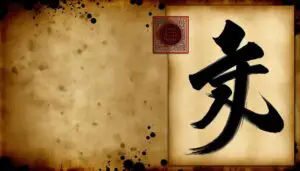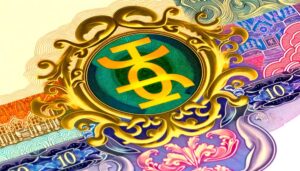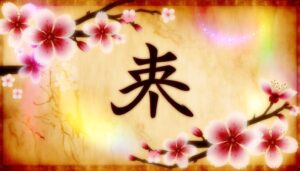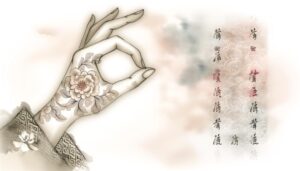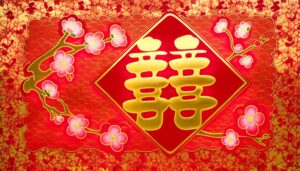Chinese Symbol for Crisis and Opportunity: What Does It Really Mean?
The Chinese term 'wēijī,' often cited as the symbol for 'crisis' and 'opportunity,' intricately combines 'wēi' (danger) and 'jī' (pivotal point). Rooted in Confucian and Daoist philosophies, it underscores adaptability and transformation in times of upheaval.
This concept has historical depth, reflecting on the potential for positive change amidst challenges. However, it is essential to approach this interpretation with linguistic precision and cultural awareness to avoid misconceptions.
The idea embodies resilience and growth, applicable in various modern contexts like business and personal development. By grasping these complexities, one gains richer cultural insights.
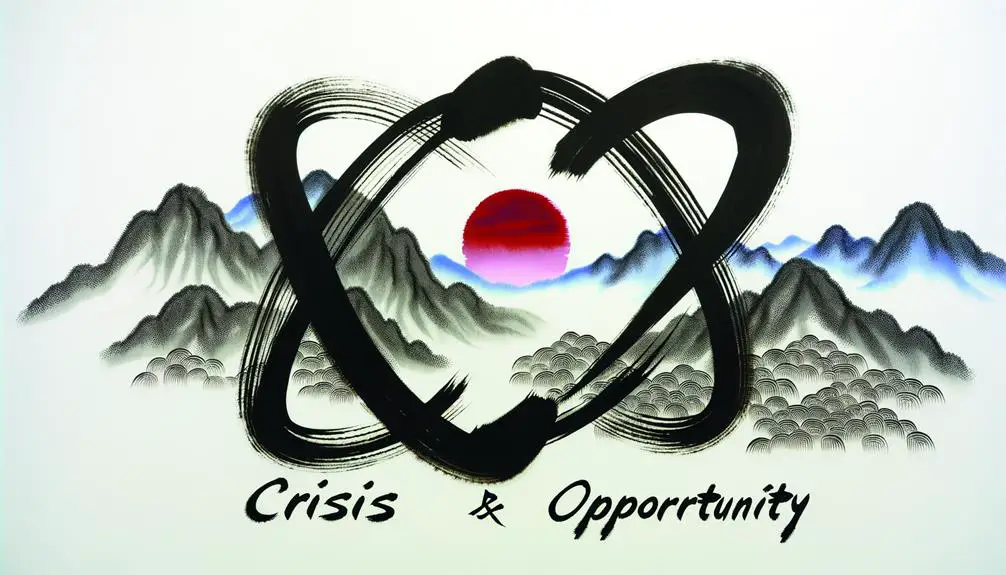
Key Takeaways
- The Chinese term 'wēijī' combines 'wēi' (danger) and 'jī' (crucial point), emphasizing adaptability and resilience.
- 'Wēijī' illustrates the potential for positive change in challenging situations, rooted in Confucian and Daoist thought.
- The characters are often misinterpreted in Western contexts, requiring precise cultural and linguistic understanding.
- 'Wēijī' is used in various fields, symbolizing growth through adversity and reflecting Chinese philosophical traditions.
- The concept highlights the interconnectedness of crisis and opportunity, aligning with Eastern perspectives on balance and transformation.
Historical Context
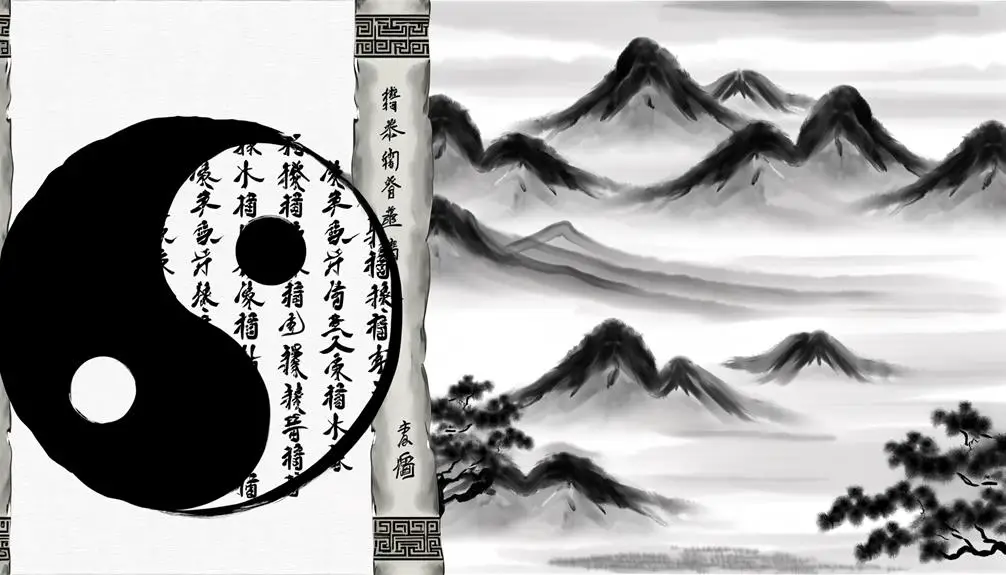
In the historical context of Chinese script, the characters for 'crisis' (危机, wēijī) and 'opportunity' (机会, jīhuì) have often been explored for their linguistic and cultural implications.
The term 'wēijī' is composed of 'wēi' (danger) and 'jī' (crucial point), reflecting the dual nature of crisis as both perilous and pivotal. Historically, these characters have intertwined in Chinese philosophy, emphasizing adaptability and resilience. This conceptualization is deeply rooted in Confucian and Daoist thought, where crises are seen as catalysts for growth and transformation.
Such perspectives permeate Chinese literature and political discourse, underscoring that within every challenging situation lies potential for positive change. This nuanced understanding showcases the intricate interplay between language and cultural ethos in Chinese history.
Linguistic Breakdown
Building on the historical context, a linguistic breakdown of the characters 'wēijī' (危机) and 'jīhuì' (机会) reveals the intricate structure and profound meanings embedded within the Chinese language.
The term 'wēijī' combines two characters:
- 危 (wēi): Danger or risk.
- 机 (jī): Opportunity or critical point.
Similarly, 'jīhuì' amalgamates:
- 机 (jī): Opportunity.
- 会 (huì): Meeting or chance.
These combinations highlight the duality of circumstances and underscore the potential for growth even in adverse situations.
This linguistic insight demonstrates the depth and adaptability of Chinese lexicon, reflecting both immediate perils and latent prospects within a single concept. Understanding these nuances enriches comprehension of Chinese philosophical and practical worldviews.
Cultural Significance

The cultural significance of the Chinese symbol for crisis and opportunity is deeply rooted in historical narratives and philosophical traditions. Historically, this symbol has reflected the Chinese ethos of resilience and adaptability, embodying a duality that underscores both danger and potential.
Modern interpretations and usage have expanded its relevance, finding resonance in global contexts where individuals and organizations embrace it as a paradigm for handling challenges.
Historical Context of Symbol
Rooted deeply in Chinese philosophy, the symbol for crisis, which combines the characters for 'danger' and 'opportunity,' reflects a nuanced understanding of adversity and potential. Emerging from classical texts, this duality emphasizes the importance of perspective during challenging times.
The characters 危 (wēi) and 机 (jī) have individually rich histories:
- 危 (wēi): Symbolizes danger, often linked to precarious situations.
- 机 (jī): Represents opportunity or pivotal moments, suggesting a critical juncture.
Historically, this combination is illustrative of:
- Confucian thought: Emphasizes balance and moral fortitude.
- Daoist philosophy: Highlights harmony and the cyclical nature of events.
This linguistic fusion underscores the cultural belief in transformative potential through resilience and adaptability.
Modern Interpretations and Usage
In contemporary times, the Chinese symbol for crisis, embodying both 'danger' and 'opportunity,' continues to resonate within cultural, business, and personal development contexts, reflecting an enduring belief in the potential for growth through adversity. This duality is prominently featured in motivational speeches, corporate strategies, and self-help literature. The symbol serves as a reminder that challenges can be a springboard for innovation and resilience. Its cultural significance is evident in various modern applications:
| Context | Interpretation |
|---|---|
| Business | Risk management and strategic planning |
| Personal Development | Overcoming obstacles and self-growth |
| Education | Learning from failure |
| Healthcare | Crisis intervention and recovery |
| Government and Policy | Crisis management and reform |
This multifaceted use underscores its timeless relevance.
Common Misconceptions
Common misconceptions surrounding the Chinese symbol for 'crisis' and 'opportunity' often stem from a misinterpretation of the characters 危 (wēi) and 机 (jī).
Historically, this linguistic pairing has been oversimplified in Western contexts, leading to an erroneous belief that the Chinese language inherently links danger and opportunity.
Understanding the cultural and etymological nuances is essential to accurately appreciate the depth and true meaning within this ancient script.
Misinterpretation of Characters
A prevalent misunderstanding involves the interpretation of the Chinese characters 危 (wēi) and 机 (jī), often mistakenly believed to represent 'crisis' and 'opportunity' respectively. Historically and linguistically, this interpretation lacks accuracy. The character 危 (wēi) signifies 'danger' or 'peril,' while 机 (jī) can mean 'machine,' 'chance,' or 'pivot,' depending on context. Their combination does not inherently encapsulate 'opportunity' arising from 'crisis.'
Common misconceptions include:
- Misunderstanding the individual meanings of 危 and 机
- Overlooking the importance of contextual nuance
- Simplifying complex linguistic and cultural concepts
- Propagating Western interpretations onto Chinese language
This misinterpretation underscores the necessity for precise linguistic and cultural understanding, ensuring accurate communication and appreciation of nuanced meanings.
Cultural Context Importance
Understanding the significance of cultural context is essential for accurately interpreting the nuanced meanings of Chinese characters and avoiding common misconceptions. Historically, the Chinese language has evolved within a rich cultural tapestry, where characters are imbued with layers of meaning shaped by millennia of philosophical, social, and historical influences.
A prime example is the misinterpretation of the characters for 'crisis' (危机), often mistakenly believed to denote 'danger' and 'opportunity.' While '危' translates to 'danger,' '机' more accurately means 'incipient moment' rather than 'opportunity.' This linguistic precision highlights the importance of contextual understanding, as oversimplifications can lead to distorted perceptions.
Hence, deep cultural insight is indispensable for true comprehension, guarding against the pitfalls of superficial translations.
Western Interpretations

The Western interpretations of the Chinese symbol for crisis, often cited as a dual representation of danger and opportunity, reveal a complex blend of historical misinterpretations and cultural nuances. This perception, popularized by figures such as John F. Kennedy, hinges on a simplified view of Chinese linguistics.
In actuality, the Chinese word for crisis, '危机' (wēijī), comprises:
- '危' (wēi): implying danger.
- '机' (jī): suggesting a point of change or juncture, not inherently opportunity.
This nuanced understanding challenges the widespread Western dichotomy and underscores the importance of accurate linguistic interpretation. The persistence of this misinterpretation highlights broader issues in cross-cultural communication and the appeal of motivational narratives.
Eastern Perspectives
Eastern perspectives on the Chinese symbol for crisis and opportunity are deeply rooted in cultural symbolism and philosophical interpretations.
Historically, the dual character representation—危机 (wēijī)—encapsulates not merely a linguistic nuance but a profound worldview where challenges and potential are intrinsically linked.
This perspective is reflective of a broader Eastern philosophy that emphasizes balance and the cyclical nature of life's experiences.
Cultural Symbolism Explained
In the rich tapestry of Eastern cultural symbolism, the Chinese characters for 'crisis' (危机, wēijī) are often cited as a compelling example of linguistic and philosophical duality, encapsulating both danger and opportunity.
This duality is deeply rooted in historical and cultural contexts, reflecting the nuanced perspectives of Chinese thought.
- 危 (wēi): Signifies danger or threat, a concept deeply embedded in Chinese history.
- 机 (jī): Represents opportunity or pivotal moment, highlighting the potential for positive change.
- Phonetic and Semantic Components: Each character is a blend of meaning and sound, showcasing the complexity of the Chinese language.
- Cultural Nuance: This duality teaches resilience, urging one to see opportunities even in adverse conditions, a principle reflected in Confucian and Daoist philosophies.
This intricate interplay of meanings illuminates the profound depth of Eastern cultural symbolism.
Philosophical Interpretations
Philosophical interpretations of the Chinese characters for 'crisis' and 'opportunity' reveal an intricate framework that underscores the interdependence of adversity and potential within Eastern thought. This concept, deeply rooted in Confucian and Daoist traditions, emphasizes the fluidity of life's circumstances. The Chinese term for 'crisis' (危机, wēijī) combines 'danger' (危, wēi) and 'opportunity' (机, jī), suggesting that challenges inherently harbor potential for positive transformation.
| Character | Meaning | Philosophical Insight |
|---|---|---|
| 危 (wēi) | Danger | Emphasizes caution and awareness |
| 机 (jī) | Opportunity | Highlights potential and action |
| 危机 (wēijī) | Crisis | Merges risk with transformative potential |
Such interpretations encourage a balanced perspective, advocating resilience and proactive engagement with difficulties to uncover inherent opportunities.
Influence on Leadership
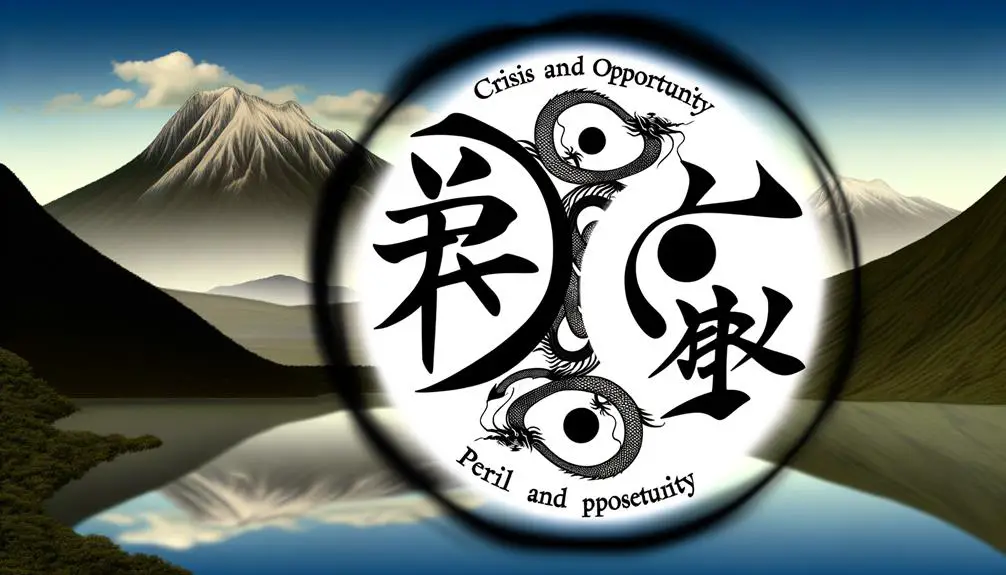
The dual interpretation of the Chinese symbol for crisis and opportunity has profoundly shaped leadership paradigms by encouraging leaders to view challenges as potential catalysts for growth and innovation. This symbolic duality has historical roots in Chinese culture and language, where the character for crisis (危机, wēijī) comprises elements signifying both danger and opportunity.
Leaders, inspired by this concept, often exhibit resilience in the face of adversity, strategic foresight to identify hidden opportunities, adaptive thinking to pivot and innovate, and cultural sensitivity to integrate diverse perspectives.
This nuanced understanding fosters a leadership style that is both proactive and reflective, bridging historical wisdom with contemporary practices, thereby enabling leaders to navigate complexities with a balanced and enlightened approach.
Crisis in Chinese Philosophy
Understanding the concept of crisis in Chinese philosophy requires exploring its deep-rooted significance within ancient texts and teachings, which emphasize the duality of peril and potential inherent in every challenging situation.
In classical works such as the I Ching and the Dao De Jing, crises are seen not merely as threats but as pivotal moments that can lead to transformation and growth. The character 危 (wēi) symbolizes danger, while 机 (jī) represents a critical point or opportunity.
This synthesis underscores a culturally enriched perspective where crisis is not an end but a crucial moment. Hence, Chinese philosophical thought invites a balanced view, encouraging resilience and adaptability, recognizing that within each crisis lies the seed of potential evolution.
Opportunity in Mandarin

In Mandarin, the concept of opportunity is intricately expressed through the character 机 (jī), which conveys not only a chance for advancement but also the pivotal nature of timing and readiness in seizing potential moments.
Historically, this character has been deeply rooted in Chinese philosophy, reflecting the importance of:
- Timeliness: Recognizing the right moment to act.
- Preparation: Being ready to seize opportunities when they arise.
- Adaptability: Adjusting to changing circumstances to maximize potential gains.
- Strategic Insight: Understanding the broader context to make informed decisions.
This nuanced understanding of opportunity underscores a cultural appreciation for foresight and prudence.
The character 机 (jī) thus embodies a sophisticated interplay between chance and deliberate action, essential for maneuvering life's uncertainties.
Modern-Day Applications
Leveraging the ancient wisdom embedded in the character 机 (jī), modern-day professionals and entrepreneurs can navigate contemporary challenges with a blend of strategic foresight and adaptive agility.
Historically, 机 signifies both 'crisis' and 'opportunity,' encapsulating the dual nature of pivotal moments. This duality encourages a proactive mindset, urging leaders to not merely react but to anticipate and harness potential benefits concealed within adversities.
In linguistic terms, the character combines elements that suggest both peril and chance, reflecting a nuanced understanding of turning points. Culturally, this concept resonates deeply within Chinese philosophy, emphasizing resilience and innovation.
Symbolism in Business

Drawing from the ancient wisdom encapsulated in the character 机 (jī), its intricate symbolism finds profound applications in the domain of business strategy and leadership. The duality inherent in jī, representing both crisis and opportunity, guides leaders to navigate complexities with foresight and resilience.
This historical context underscores the importance of turning challenges into strategic advantages.
Key applications in business include:
- Risk Management: Transforming potential threats into growth avenues.
- Innovation: Leveraging crises to drive creative solutions.
- Strategic Planning: Using foresight to anticipate and mitigate challenges.
- Leadership Development: Cultivating resilience and adaptability in leaders.
Personal Growth Stories
Personal narratives often reveal the transformative power of crises, illustrating how individuals harness adversity to achieve profound growth and success. Historically, many have turned seemingly insurmountable challenges into significant personal milestones. This phenomenon is reflective of the Chinese symbol for crisis, which encapsulates both danger and opportunity.
| Name | Crisis Faced | Resulting Opportunity |
|---|---|---|
| Einstein | Academic Failures | Theory of Relativity |
| Jobs | Firing from Apple | Founding of NeXT, Pixar |
| Rowling | Poverty, Rejections | Harry Potter Series |
| Mandela | Imprisonment | Leadership in South Africa |
Such stories underscore the cultural insight that crises are not solely destructive; they can also be the crucibles in which remarkable achievements are forged.
Conclusion
The juxtaposition of crisis and opportunity within the Chinese symbol offers a profound insight into cultural and linguistic contexts. Historically rooted, this duality encapsulates an enduring philosophy—one that has been often misunderstood in Western interpretations.
By breaking down the linguistic elements and examining modern applications, the symbol serves as proof of resilience and adaptability. This duality, particularly significant in business and personal growth, transforms challenges into avenues for progress and innovation.


